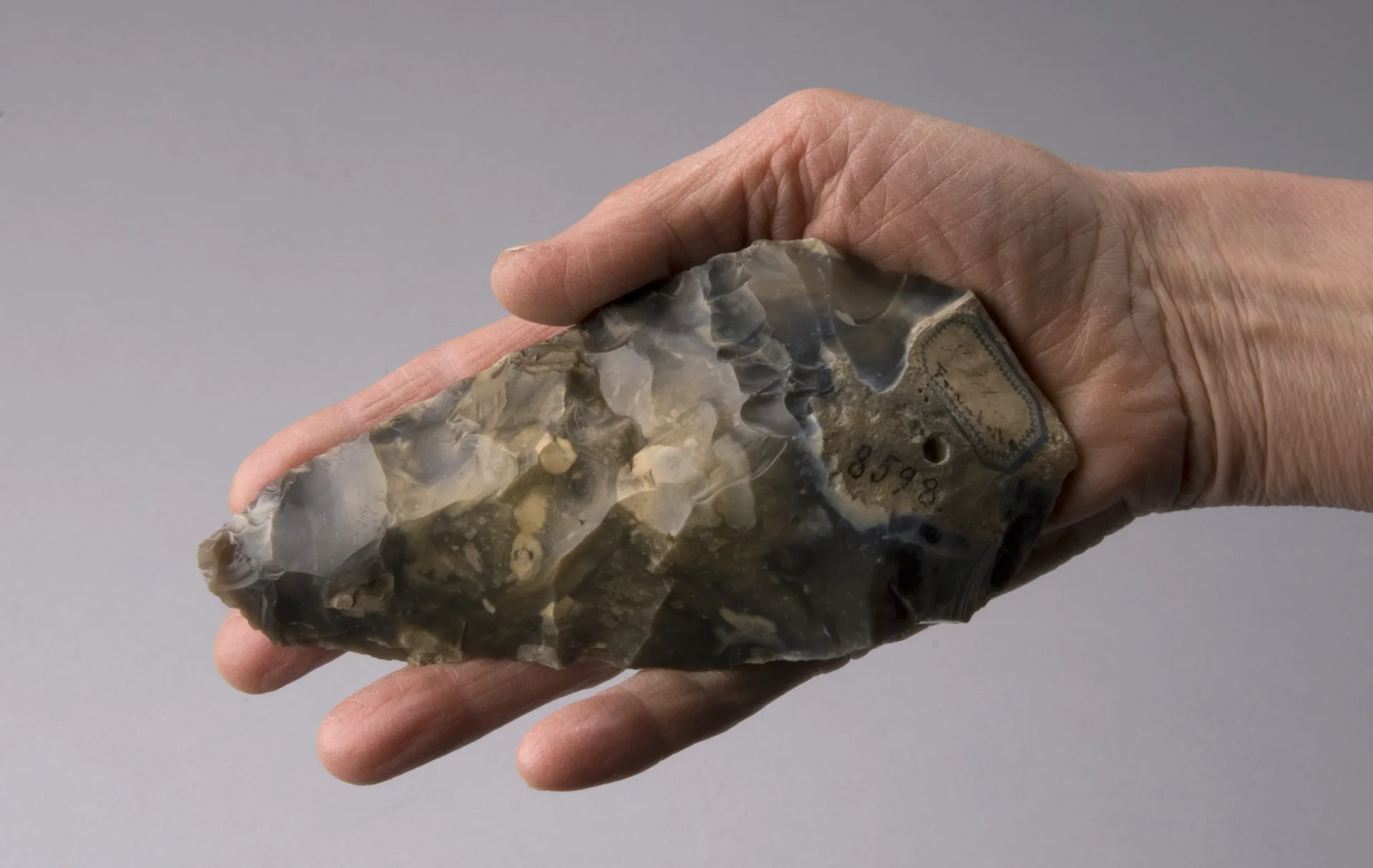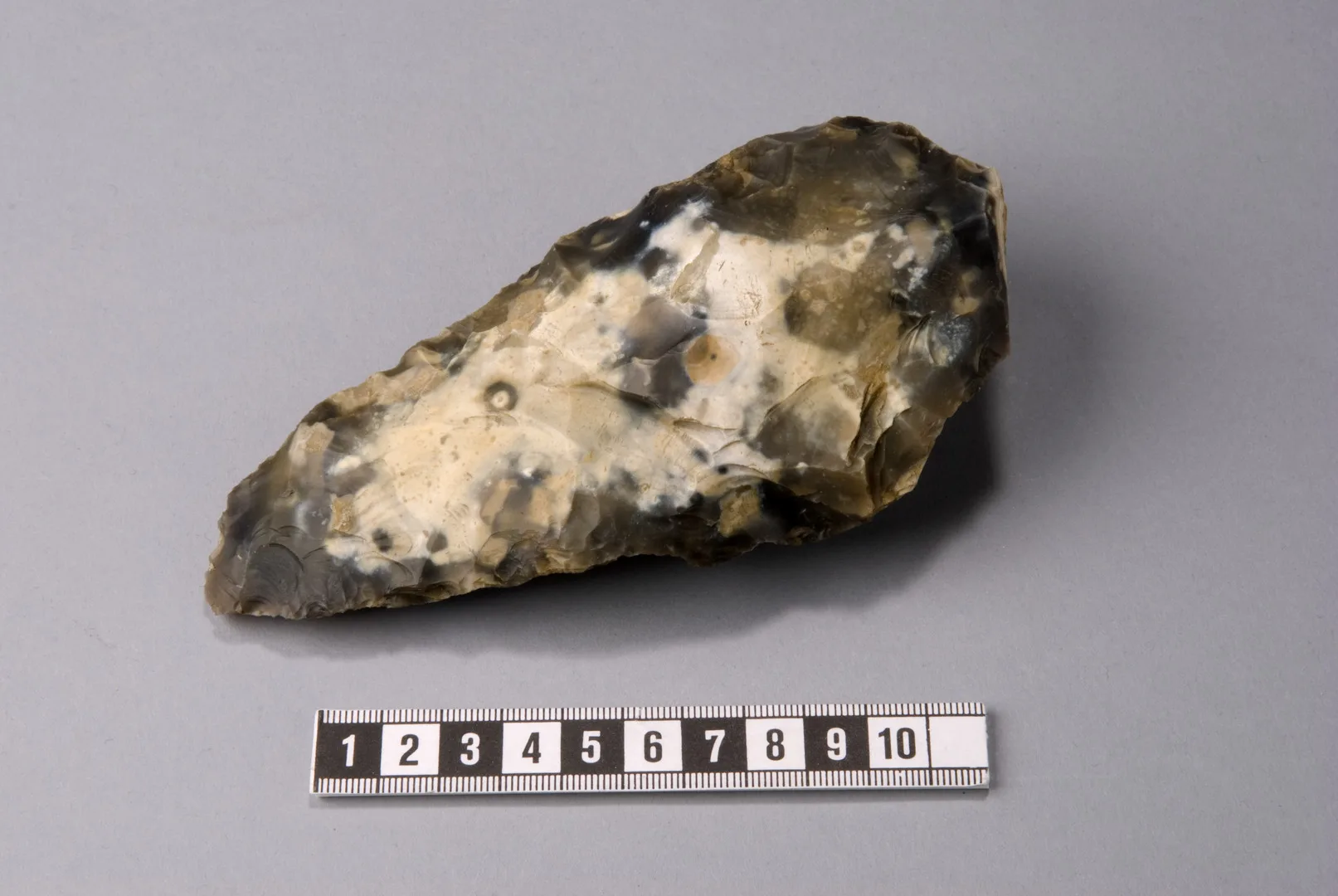The oldest object in the Swedish History Museum
Stone Age
12,000 BC – 1700 BC
Bronze Age
1700 BC – 500 BC
Iron Age
500 BC – AD 1100

Before that time, the last Ice Age had covered the entire region in glacial ice. As the ice advanced, it reshaped the landscape and destroyed nearly all traces of earlier environments. As a result, the chances of finding any evidence of human presence predating the ice are considered extremely slim.
A small part of the museum’s collections, however, consists of objects from other countries. Although the museum no longer acquires artefacts discovered outside Sweden, we still retain items from an earlier period, when comparative collections were being built. At that time, the museum acquired objects from abroad to enable researchers to compare Swedish material with that of other regions.
How old are the museum’s artefacts?
Some of the oldest artefacts in the collection could be from Africa, where early humans first evolved. This is because humans only began to migrate out of Africa around 1.8 million years ago. However, the oldest known stone tools are significantly older, around 3.3 million years, and actually predate the genus Homo.
The earliest known members of our genus (Homo habilis) appeared approximately 2.8 million years ago. The tools they made belong to what is known as the Oldowan tradition. Using a hammerstone, early humans struck flakes from naturally rounded stones; both the flakes and the core could then be used as tools.
Jacqueline Taffinder, former Senior Curator of Stone Age collections, examined the museum’s comparative African material but found no examples of these very early Oldowan tools. However, in the European collection, she did identify a handaxe.
The handaxe from Saint-Acheul
The museum’s handaxe originates from Saint-Acheul, near Amiens in northern France. It entered the collection in 1889 as a donation from E. D’Aey. Saint-Acheul is a well-known archaeological site, and it gave its name to a distinctive tool-making tradition: the Acheulean (also spelled Acheuléen).
This tradition appears in Africa, southwestern Europe, and parts of Asia, and is associated with the emergence of Homo ergaster and Homo erectus. These early humans, often collectively referred to as "erectins," were the first to leave Africa. They adapted to a changing environment of more open landscapes and were also the first to use fire, evidence of which dates back to about 1.5 million years ago.

Handaxe
Acheulean tools are especially known for their bifacially worked handaxes. As with Oldowan tools, both the final tool and the discarded flakes were used.
The oldest Acheulean tools in Africa date back nearly 1.8 million years. In Europe, the oldest known examples are around 900,000 years old, and handaxes remained in use there until roughly 200,000 to 100,000 years ago.
A versatile tool
The museum’s handaxe is made of flint. At the time, toolmakers typically used stones available in their immediate surroundings. In western Europe, flint was a common choice, whereas in Africa, rocks such as basalt were often preferred. In fact, a wide range of stone types were used to manufacture handaxes.
Most handaxes are oval, pear-shaped or teardrop-shaped and typically measure between 12 and 20 centimetres in length. The name "handaxe" comes from the fact that they were not hafted to handles, but held directly in the hand. They functioned as true multi-purpose implements.
Wear analysis suggests that handaxes were used in butchering, but also for digging and chopping wood. Handaxes have been found alongside animal bones bearing clear cut marks from slaughter and processing.
Jacqueline Taffinder has estimated that the Saint-Acheul handaxe in the museum’s collection may have been made approximately 250,000 years ago. The technique for producing handaxes evolved over time, becoming more refined.
If this estimate is accurate, it would make the handaxe from Saint-Acheul the oldest object in the collections of the Swedish History Museum.




